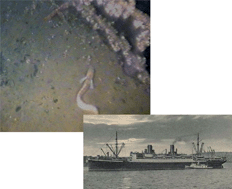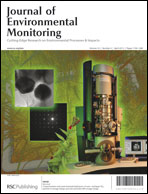Toxicity assessment of sediments associated with the wreck of s/s Stuttgart in the Gulf of Gdańsk (Poland)†
Abstract
The paper presents the results of toxicity determinations carried out on sediment samples collected in the vicinity of the wreck of the German s/s Stuttgart (the southern part of the Gulf of Gdańsk, off the Polish coast) in relation to the determination of polycyclic aromatic


 Please wait while we load your content...
Please wait while we load your content...